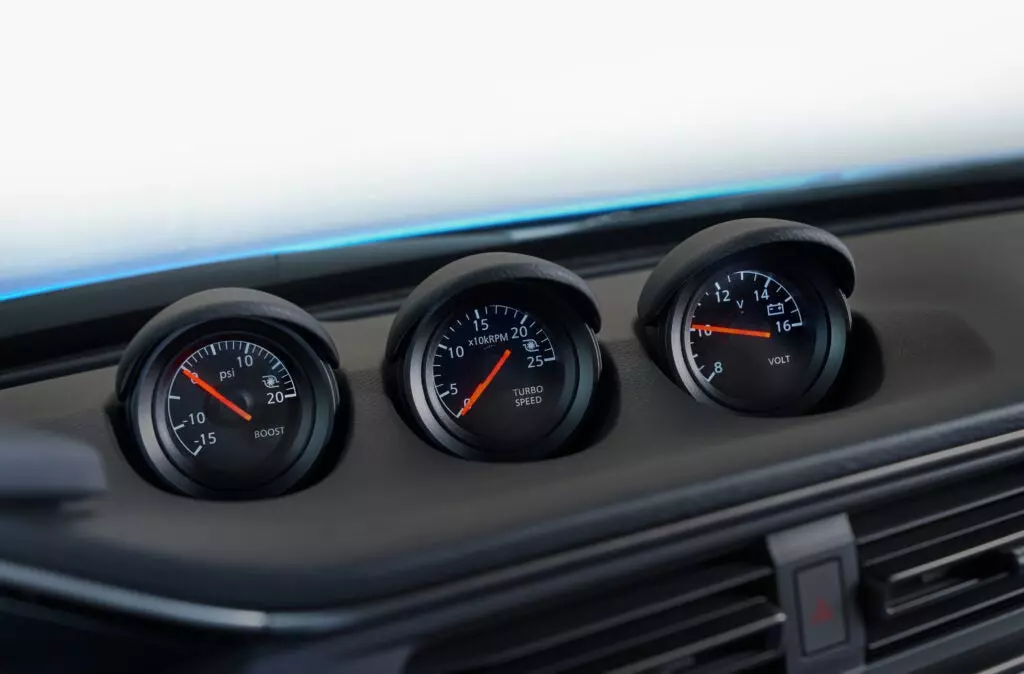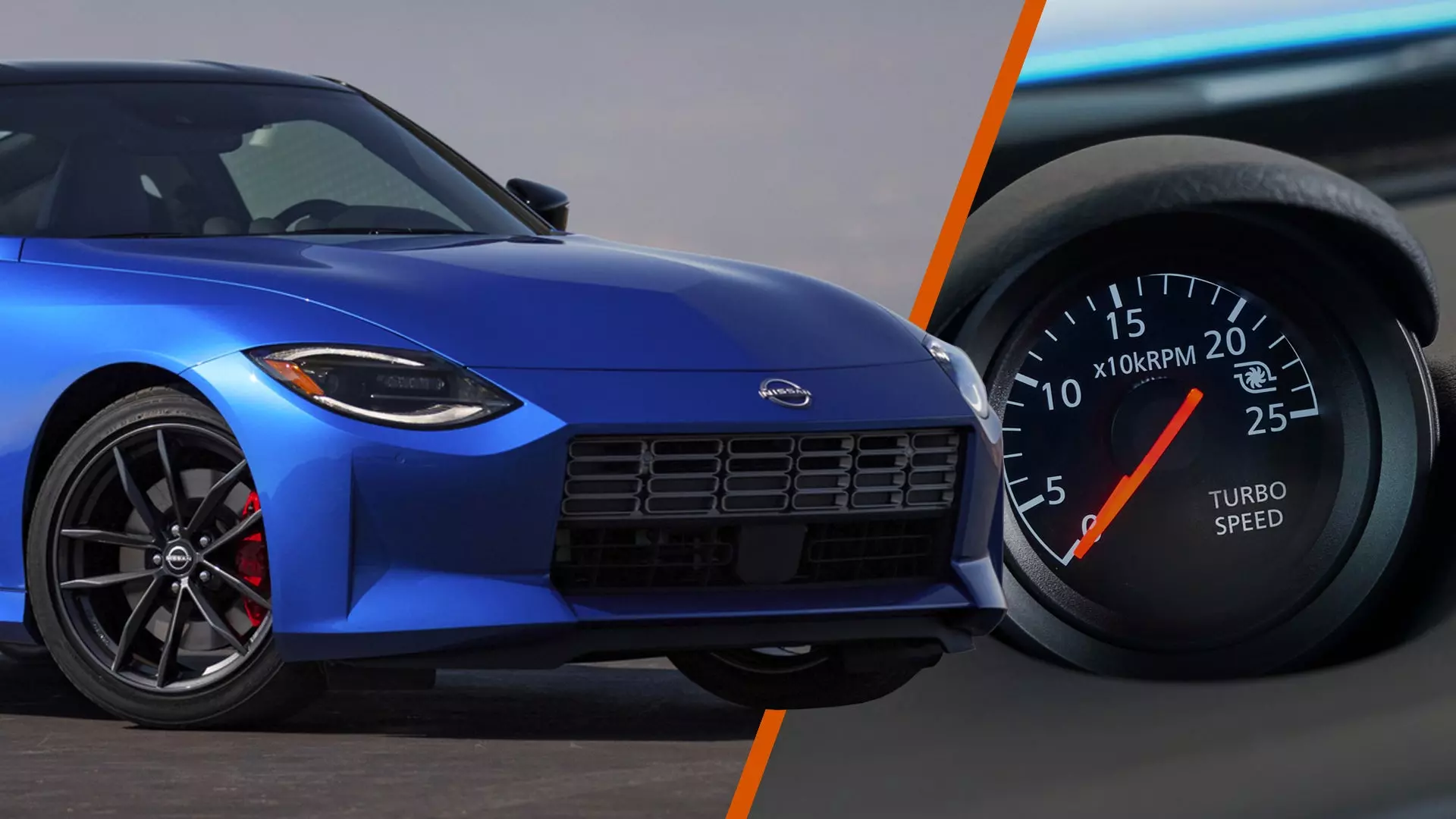The 2023 Nissan Z’s 400 horsepower VR30DDTT twin-turbo engine is one of Nissan’s best ever and the company’s rightfully proud of it. Packed with plenty of contemporary technologies like direct injection, highly advanced variable valve timing and lift, and some pretty trick twin-turbos, the “new” engine is going to serve the new Z well. With all that tech comes an interesting addition to the interior gauges: A turbo speed gauge, which is not a boost gauge, and not something we’ve really seen on a production car before.
Nissan says that the three-gauge pod on the dash of the Z is a design feature of the Z specifically. On the previous 370Z, the gauges would display oil temperature, voltage, and a clock. Zs before that have always had a cluster of gauges around this position, too. For the new one, the oil temperature readout was moved into the main gauge cluster along with the clock, and the two newly empty slots were filled with boost and turbo speed which, again, is an interesting bit of telemetry to show to a consumer.

Well, what is turbo speed? We all know about boost and how that relates to making power (more pressure, more zoom), but turbo speed directly relates to boost and turbocharger efficiency. Turbo speed is how fast the turbo is spinning, which you might have guessed. What that actually tells us is how much air it is displacing over a period of time. Boost tells us the actual pressure in the intake manifold of the engine, but turbo speed tells us how hard the turbo is working to achieve that pressure. Generally, turbos fun from 120,000 rpm to 180,000 rpm at the very highest peaks. Usually, 150,000 rpm is a happy zone for a lot of turbos.
One of the things Nissan is proud of on the VR30 is its reasonably advanced turbochargers. They are made by Garrett and are known as the FZ5T model. While small, they pack an efficient punch with billet compressor wheels, exhaust gas temperature sensors, electronic wastegate actuators, and turbo speed sensors.
Turbo speed sensors are not common. In fact, the only other turbo I know of that has one is Borg-Warner’s aftermarket line of turbochargers called EFR, which means Engineered For Race. It’s a trick little sensor and actually helps keep the turbo efficient and reliable, which is why Nissan chose to include them.
Boost as a reference for turbo performance on its own is pretty ineffective without a variety of different data streams to verify how well the turbo is working. You can screw 30 psi of boost into your stock GTI and not make very much power, and that’s because you’re more than likely making the turbo spin faster than it is designed to, which makes it inefficient.
You see, every turbo has a range of efficiency, which means that the turbo has a certain speed, boost, and airflow range where it works best. Running too small of a turbo on a large engine makes the turbo spin too quickly and lose power over the rev range. Running too big of a turbo on a small engine makes it laggy and unresponsive. Let’s take it further: Running a stock turbo too hard on a stock engine makes it wear out quicker, doesn’t make much more power, and might hurt your engine because of the extra heat that the turbo is putting out. You’re still compressing that air and making it much hotter than the factory ever anticipated.
The sensor itself won’t help anybody unless the data is used for tuning or in the ECU. The likelihood is that Nissan developed the engine software to meet certain turbo speed and boost targets where the turbo is most efficient and makes the most power in every situation. It’s an extra data point for safety as well; overspeeding a turbo can cause it to burst and fail in a dangerous way.
So why did Nissan choose to include this in the gauge pod? Well, I’m pretty sure it’s because they had to fill a space in their gauge pod, but it adds a pretty cool little metric to keep an eye on. When I drive modern cars with radar cruise and the gauge cluster says “radar ready” it feels like I’m piloting an aircraft. Now, when I’m in my potential future Z, I can activate my radar and check my turbo speed. It’s a cool feature with some random style, and the gauge will be active and alive like the boost gauge.
I’m a fan. Especially because those turbos look like they’re ready to make some easy power. I’m looking forward to Zs getting into customers’ hands soon.









